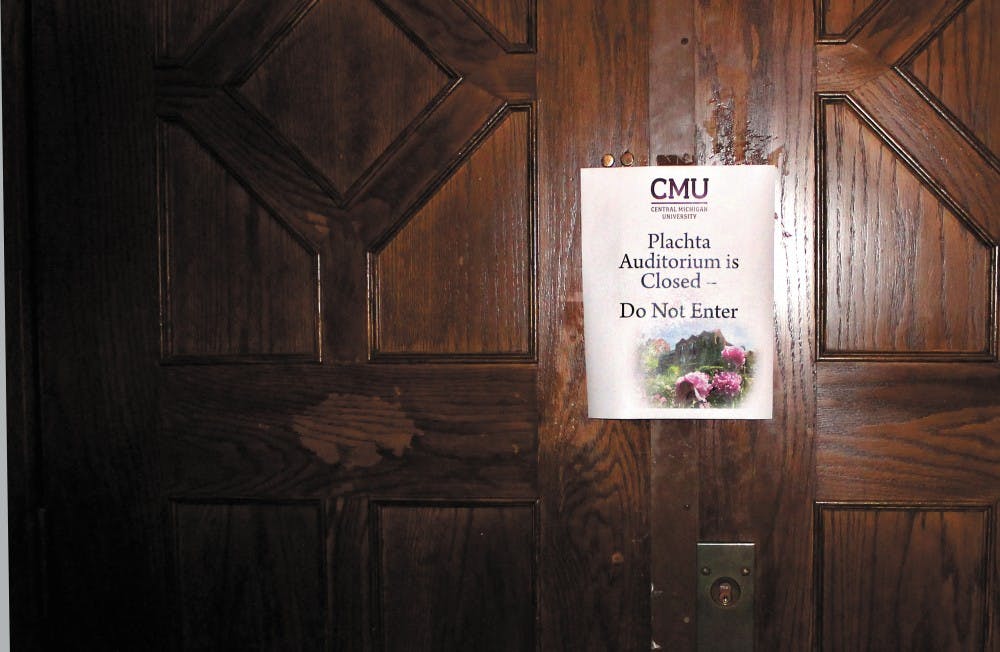Plachta remains closed during asbestos abatement
Plachta Auditorium has been closed since May 29 for asbestos abatement, and administrators don't know when it will be open again.
Workers found elevated levels of asbestos in the air while working on waterlines. They noticed insulation and old pipes in an air duct in the building's crawl space. The total cost of abatement in Warriner Hall won't be known until the auditorium is complete. Offices in the building reopened in June.
Vice President of Finance and Administrative Services Barrie Wilkes said he's never seen an abatement that's taken this long.
"I've never been in a situation where it has been this big of an issue," he said. "(Plachta) is unique in size."
The ducts in Warriner Hall go up to the ceiling, so workers had the challenge of figuring out how to get people up there. The auditorium has been sealed off and has a separate duct system, so it does not affect the air in other parts of the building, which is occupied by 169 workers.
Wilkes said the university has done inventory of asbestos in other campus buildings.
"As long as it's contained, it's not a problem," he said. "We know old buildings have asbestos, but we routinely monitor them."
Workers identify places where there is asbestos before they plan a new campus project so they know not to disturb it. Wilkes said when remodeling, they correct asbestos problems as part of the project.
"This case is an area that wouldn't normally be accessed," Wilkes said. "It got into the air supply before we were able to contain it."
Asbestos was a popular building material during the 50s, but was banned in 1999 after health concerns were raised. Warriner Hall was finished in 1928. Asbestos can be found in ceiling tiles, pipe insulation, around windows and other parts of homes and commercial buildings.
Symptoms of asbestos exposure show up mostly in the respiratory tract, and can include chest pain, a persistent cough and loss of appetite. If a long exposure occurs, it can lead to mesothelioma and lung cancer. However, some types of asbestos can cause lesser or different symptoms.




